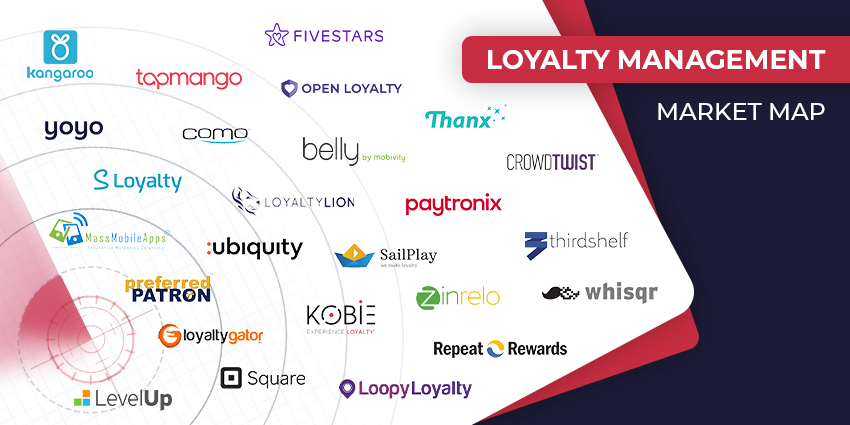Gartner has released its 2023 Magic Quadrant for digital experience platforms (DXP).
Such platforms help to manage the digital experience for partners, employees, and customers.
The emphasis is typically on the latter, with several features designed to enhance online customer journeys.
Content management, journey mapping, and analytics tools are just a few examples.
Yet, with so many capabilities to flitter through, isolating the best-fit DXP vendor is challenging.
Thankfully, the Gartner Magic Quadrant pulls out some of the most pressing strengths and cautions of 14 prominent players.
This year, the analyst isolated four market leaders.
A Definition of Digital Experience Platforms
A DXP platform centralizes a suite of solutions that enable businesses to build, manage, and optimize digital experiences.
It does so by combining journey orchestration with several other applications, paving the way for a more seamless customer experience.
However, DXP platforms also contain capabilities that allow employees to support their journeys.
All these features come either natively or in the form of tight integrations.
They include content management tools, personalization engines, analytics, account services, data management solutions, collaboration kits, and more.
Leading providers also delve into spaces such as digital commerce, marketing automation, and sometimes even CRM.
As such, the sector is incredibly diverse, making the task of categorizing vendors tricky.
Nevertheless, Gartner has attempted to do so, splitting 14 providers into four categories: Leaders, Challengers, Visionaries, and Niche Players. Here, we review them all.

Gartner Magic Quadrant Leaders
Leaders influence the market direction, pairing a carefully constructed, creative vision with a track record for delivering the desired customer outcomes. As such, they excel in many arenas, including market understanding, completeness of features, and overall viability. This year’s leaders are:
- Adobe
- Optimizely
- Acquia
- Sitecore
Adobe
The Adobe Experience Cloud is perhaps the most prominent DXP in the report. Gartner believes its substantial market share stems from it being a “proven and mature” solution. Other strengths include its broad set of functionalities and expansive ecosystem, which help the vendor serve customers across businesses of all shapes and sizes. It is also starting to deliver sector-specific innovations, with the recent launch of Adobe Experience Cloud for Healthcare an excellent example.
Optimizely
Like Adobe, Optimizely offers a deep product set devised for businesses that take a suite approach to digital experience and those that prefer a more modular, mature strategy. Its Liquid templating and JavaScript hosting for front ends also support diverse delivery needs. Gartner acknowledges these as key strengths, alongside its pricing and packaging strategy that is “simple, scalable, modular and transparent” compared to rival offerings.
Acquia
Acquia’s Drupal Cloud and Marketing Cloud come together to form a comprehensive DXP. A “standout feature” of which – according to Gartner – is its Site Factory. The solution allows customer experience teams to design, launch, and manage websites from a single code base. Acquia also secured plaudits for data management, machine learning, and low-code applications across its portfolio. Finally, its commitment to employee experience innovation gains praise from the analyst.
Sitecore
Sitecore combines its Content Cloud, Engagement Cloud, and Commerce Cloud solutions to provide an “all-in-one DXP”. In driving forwards toward the cloud, Sitecore champions composability, building incrementally rather than in one fell swoop. Gartner considers this approach a core strength, alongside Sitecore’s investment in delivering technology that is quick to deploy and its customer support and guidance prerogative.
Gartner Magic Quadrant Challengers
Challengers boast a track record for driving outcomes that meet customer demands. With this, these vendors have developed a significant install base. Nonetheless, Gartner deems that they trail leaders in their vision, which may impact their ability to meet future requirements. This year’s leaders are:
- HCL Software
- OpenText
HCL Software
HCLSoftware goes to market with a self-titled “trusted platform”. Backing this up, the vendor has developed deep security and governance features, which Gartner considers “key differentiators”. The analyst also pinpoints HCLSoftware’s framework for linking various elements of its broader portfolio with the DXP as another strength, supporting new, AI-powered experiences. Nevertheless, its platform complexity may create challenges for those without specialist skills and consulting.
OpenText
Available within the Azure, Google, and AWS clouds, alongside a private cloud, businesses have various DXP deployment options. Yet, not only is its platform extensible, it’s also highly customizable. Gartner recognizes this, in addition to OpenText’s expertise in highly regulated industries and support services that go beyond the scope of DXP, supporting broader information management initiatives. However, it lags leaders in addressing cutting-edge requirements.
Gartner Magic Quadrant Visionaries
Visionaries pair market understanding with a well-conceived vision for the future. As such, these vendors can quickly get to grips with emerging technologies and customer needs. Nevertheless, Gartner highlights gaps in their solutions, support, and/or services. This year’s leaders are:
- Bloomreach
- Magnolia
Bloomreach
Bloomreach enjoyed significant growth in 2022, attracting customers in verticals outside of its traditional retail and manufacturing stomping ground. Its work with companies in healthcare, banking, and other sectors comes after a drive toward modular agility. Gartner lauds this focus alongside its headless CMS, JavaScript-decoupled front-end integration, and Bloomreach Engagement tools. However, it cautions that its DXP is primarily digital-commerce-oriented.
Magnolia
Magnolia embraces composability as the future of customer experience, building tight integrations to third-party capabilities that fit neatly into the UI. Gartner pinpoints this strategy and its support for hosting headless front-end applications as strengths. With that said, the analyst suggests that Magnolia relies heavily on other providers for AI, analytics, and data management functions. Thankfully, it has significantly expanded its partner ecosystem to somewhat quell this concern.
Gartner Magic Quadrant Niche Players
Niche players often deliver positive customer outcomes through specific use cases. Yet, they can sometimes focus too heavily on narrow deployment scenarios, cover a small set of sectors, and/or fail to grow their geographic footprint beyond a particular region. This year’s leaders are:
- Liferay
- Crownpeak
- CoreMedia
- Progress
- Kentico
- Squiz
Liferay
Liferay’s DXP often supports organizations with complex requirements on-premise and in the cloud. Gartner indicates that the provider is often a good option for projects that necessitate heavy-duty integrations and customer application development. However, Liferay’s lack of low-code tooling and intuitiveness makes it less appropriate for simple website and multichannel use cases. Indeed, the analyst suggests that these concerns may contribute to its slowing momentum.
Crownpeak
Crownpeak acquired Attraqt for search and discovery tooling at the tail end of 2022, bolstering its DXP feature set. Gartner has not factored this into its evaluation. Yet, Crownpeak still impressed the marker analyst with its AI-powered personalization tooling, clarification of its go-to-market strategy, and native UI integrations. Unfortunately, it lags in the sophistication of central DXP components, including journey mapping, analytics, and data management capabilities.
CoreMedia
As is perhaps evident in the name of its DXP – the CoreMedia Content Cloud – the Hamburg-based provider follows a narrow go-to-market strategy, prioritizing digital commerce. As such, Gartner warns prospective to carefully evaluate CoreMedia’s roadmap if they intend to expand into other realms of the DXP space. However, the vendor does offer a broad integration set alongside “comprehensive support”, which enables brands to ensure consistency in their multichannel output.
Progress
With its Sitefinity DX solution, Progress demonstrates many differentiating features, including a configurable conversational interface, helping the vendor establish an impressive market presence. To build this further, Progress added a business arm that will fully focus on digital experience management. Gartner notes the division may help improve the coordination of its product portfolio, which – despite plus points – has limitations in its prebuilt modules and integrations.
Kentico
Last year, Kentico launched Xperience 13, the successor to its Xperience DXP. The vendor geared the self-managed SaaS platform at digital marketers – serving up low-code solutions built organically. Gartner admires this strategy but notes that it has limited its ability to roll up customers. Moreover, the analyst raises concern that a large-size “rearchitecting and transition exercise” is likely necessary after spinning its headless content management system – Kontent.ai – into a separate business.
Squiz
Squiz has increased its presence in North America and the UK, thanks largely to its differentiated solutions for the government and education sectors. The vendor bolsters these with “prebuilt integration recipes” that speed up time to value. Unfortunately, the depth of its portfolio lags many of its competitors, with Gartner noting journey mapping, data management, personalization, and analytics as areas Squiz may wish to build upon.
What Has Changed Since 2022?
Here is a side-by-side view of the 2022 and 2023 Gartner Magic Quadrant for Digital Experience Platforms.
The most striking difference is the absence of two marquee name vendors in the 2023 edition: Salesforce and Oracle.
Gartner notes how this is due to a change of strategy from both. Indeed, Salesforce no longer goes to market with a specific DXP offering. Meanwhile, Oracle aims to go beyond the DXP scope within its Oracle Advertising and Customer Experience suite of applications.
There are no entrants in this year’s magic quadrant.
Interestingly, 13 of the 14 vendors stayed in the same category as in 2022. The only move is Liferay, which clipped from a challenger to a niche player – with Gartner noting its “slowing momentum” within the market.
Indeed, there seems to be minimal movement, with small gains for Bloomreach, HCL Software, Crownpeak, and CoreMedia.
Catch up on some of the latest CX-related Magic Quadrant by reading the following rundowns:
- Gartner Magic Quadrant for Enterprise Conversational AI Platforms 2023
- Gartner Magic Quadrant for Robotic Process Automation (RPA) 2022
- Gartner Magic Quadrant for Contact Center as a Service (CCaaS) 2022







